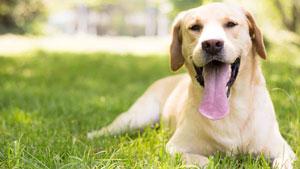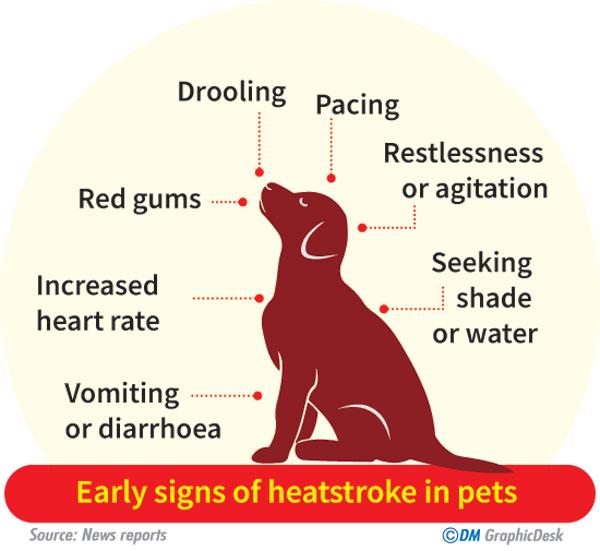Reply To:
Name - Reply Comment
 Colombo, March 13 (Daily Mirror) - Following the current high temperature, pets, especially dogs and cats, face significant health risks from heatstroke as they primarily dissipate heat through panting, with limited sweating through paw pads and the nose, unlike humans, City Pet Animal Hospital Managing Director Dr. Sugath Premachandra said.
Colombo, March 13 (Daily Mirror) - Following the current high temperature, pets, especially dogs and cats, face significant health risks from heatstroke as they primarily dissipate heat through panting, with limited sweating through paw pads and the nose, unlike humans, City Pet Animal Hospital Managing Director Dr. Sugath Premachandra said.
He said pet animals regulate their body temperature by panting. When the panting is not sufficient to get their temperature down, they can go on to develop heatstroke, he said.
Panting (this can progress to distressed or noisy breathing as the heatstroke worsens), restlessness or agitation, pacing, seeking shade or water, drooling, red gums, increased heart rate, and vomiting or diarrhoea can be mentioned as early signs of heatstroke in pet animals.
Heatstroke can occur in older dogs, puppies, sick dogs, and those with chronic health conditions like heart disease. Long-haired dog breeds, pucks, Pomeranians, Shih Tzu, Husky, St. Bernard and Golden Retrievers must be protected from heatstroke.
If your dog's body temperature gets to 109ºF or higher, heatstroke is the result. The cells of the body rapidly start to die. The brain swells, causing seizures.
Dehydration leads to irreversible kidney damage. All these catastrophic events take place within a matter of minutes, and within those minutes, they can cost a life.
To make matters worse, dogs have a higher body temperature (101.5–102 °C) than people, and they don't cool down as efficiently as humans do. Your canine buddy is designed more for staying warm from the cold than for cooling down.
As humans have sweat glands all over their bodies, dogs's are confined to their noses and the pads of their feet. A dog that is heating up can only normalize its body temperature through panting, which just doesn't get the job done under extreme conditions.
If your dog is experiencing heatstroke, swiftly relocate it to a cool space, preferably in the shade or air-conditioned area. Evaluate its condition by checking for the ability to stand, consciousness, and panting. If the dog exhibits these signs, provide small amounts of water. If the body temperature is 104ºF or below, stay with the dog in a cool environment, monitor closely, and offer small sips of water. Avoid giving a large amount of water at once to prevent vomiting and further risk of dehydration.
When it seems more comfortable, call your veterinarian for the next steps. The doctor may want to evaluate your dog, even if it seems fully recovered. If your dog is unable to stand on its own, is unresponsive to your voice, touch, or sight, or is having seizures, check for breathing and a heartbeat. At the same time, have someone contact a veterinary hospital (or make the call yourself if you're alone with your pet) to let them know you'll be bringing it in right away. It's important to alert the clinic that you're on the way so they can prepare for your arrival. Begin cooling procedures by soaking its body with cool water—cool but not cold. Use a hose, wet towels, or any other source of cool water that is handy.
Dr. Premachandra warns the dog owners to keep vehicle temperatures very low when travelling with their pets and warns not to keep the pet in the vehicle as it is unable to control its body temperature.
He also said the heatstroke can occur in even pet cats. The signs of heatstroke in cats include drooling, panting, seeking a cooler spot, disorientation, red gums, vomiting and/or diarrhoea, pinpoint spots of bleeding on the skin, heavy breathing, seizures, and collapse.
